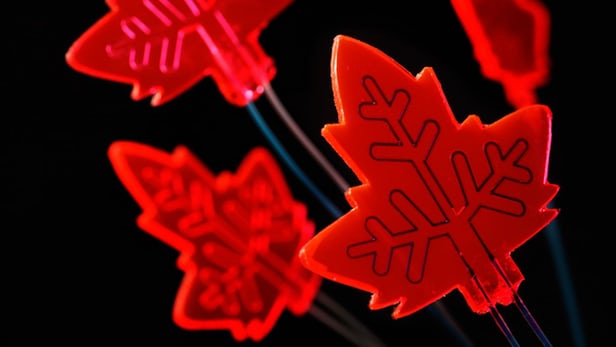
Breaking News
 3 arrested in Hong Kong, as a high-rise fire leaves at least 44 dead and 279 reported missing
3 arrested in Hong Kong, as a high-rise fire leaves at least 44 dead and 279 reported missing
 Carbon Footprint Tax is the Precursor to Global Slavery
Carbon Footprint Tax is the Precursor to Global Slavery
 Russia has officially banned Satanism, declaring the International Satanist Movement...
Russia has officially banned Satanism, declaring the International Satanist Movement...
 Decoding Your Teen - #SolutionsWatch
Decoding Your Teen - #SolutionsWatch
Top Tech News
 First totally synthetic human brain model has been realized
First totally synthetic human brain model has been realized
 Mach-23 potato gun to shoot satellites into space
Mach-23 potato gun to shoot satellites into space
 Blue Origin Will Increase New Glenn Thrust 15-25% and Make Rocket Bigger
Blue Origin Will Increase New Glenn Thrust 15-25% and Make Rocket Bigger
 Pennsylvania Bill – 'Jetsons Act' – Aims To Green-Light Flying Cars
Pennsylvania Bill – 'Jetsons Act' – Aims To Green-Light Flying Cars
 New Gel Regrows Dental Enamel–Which Humans Cannot Do–and Could Revolutionize Tooth Care
New Gel Regrows Dental Enamel–Which Humans Cannot Do–and Could Revolutionize Tooth Care
 Researchers want to drop lab grown brains into video games
Researchers want to drop lab grown brains into video games
 Scientists achieve breakthrough in Quantum satellite uplink
Scientists achieve breakthrough in Quantum satellite uplink
 Blue Origin New Glenn 2 Next Launch and How Many Launches in 2026 and 2027
Blue Origin New Glenn 2 Next Launch and How Many Launches in 2026 and 2027
 China's thorium reactor aims to fuse power and parity
China's thorium reactor aims to fuse power and parity
 Ancient way to create penicillin, a medicine from ancient era
Ancient way to create penicillin, a medicine from ancient era
Artificial leaf could make a medicinal mini-factory

Now a team at Eindhoven University of Technology (TU/e) is using a similar system to produce chemicals, which could one day lead to solar-powered "mini-factories" that can produce drugs, pesticides and other chemicals almost anywhere.
To mimic the light-capturing molecules in leaves, the researchers turned to luminescent solar concentrators (LSCs), materials seen in solar-harvesting window technology and used to catch and amplify laser beams carrying data in Facebook's drone-mounted internet project. These LSCs absorb incoming light, convert it to specific wavelengths and then guide the photons to the edges of the device.
The TU/e team's take on the idea was to create a leaf-shaped device, made from a silicon rubber LSC, with a thin channel running through it like the veins in a leaf. As chemicals are pumped through the channel, the LSC material directs sunlight towards it, and the high intensity of the sunlight can trigger a chemical reaction with the liquid in the channel. Essentially, one substance enters, and by the time it comes out the other end, the device will have converted it into a different chemical, which may be useful as a drug, fuel or other agent.



